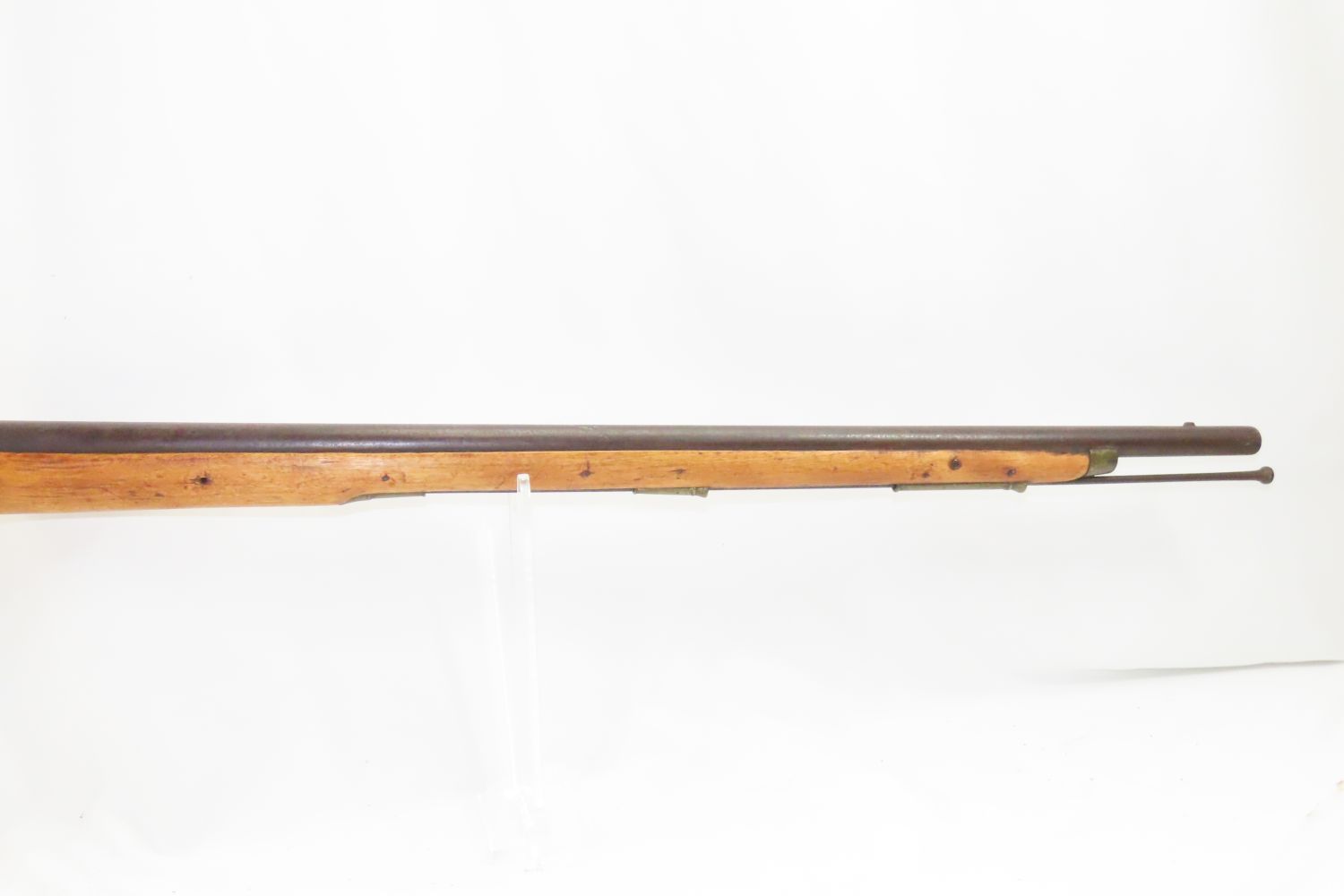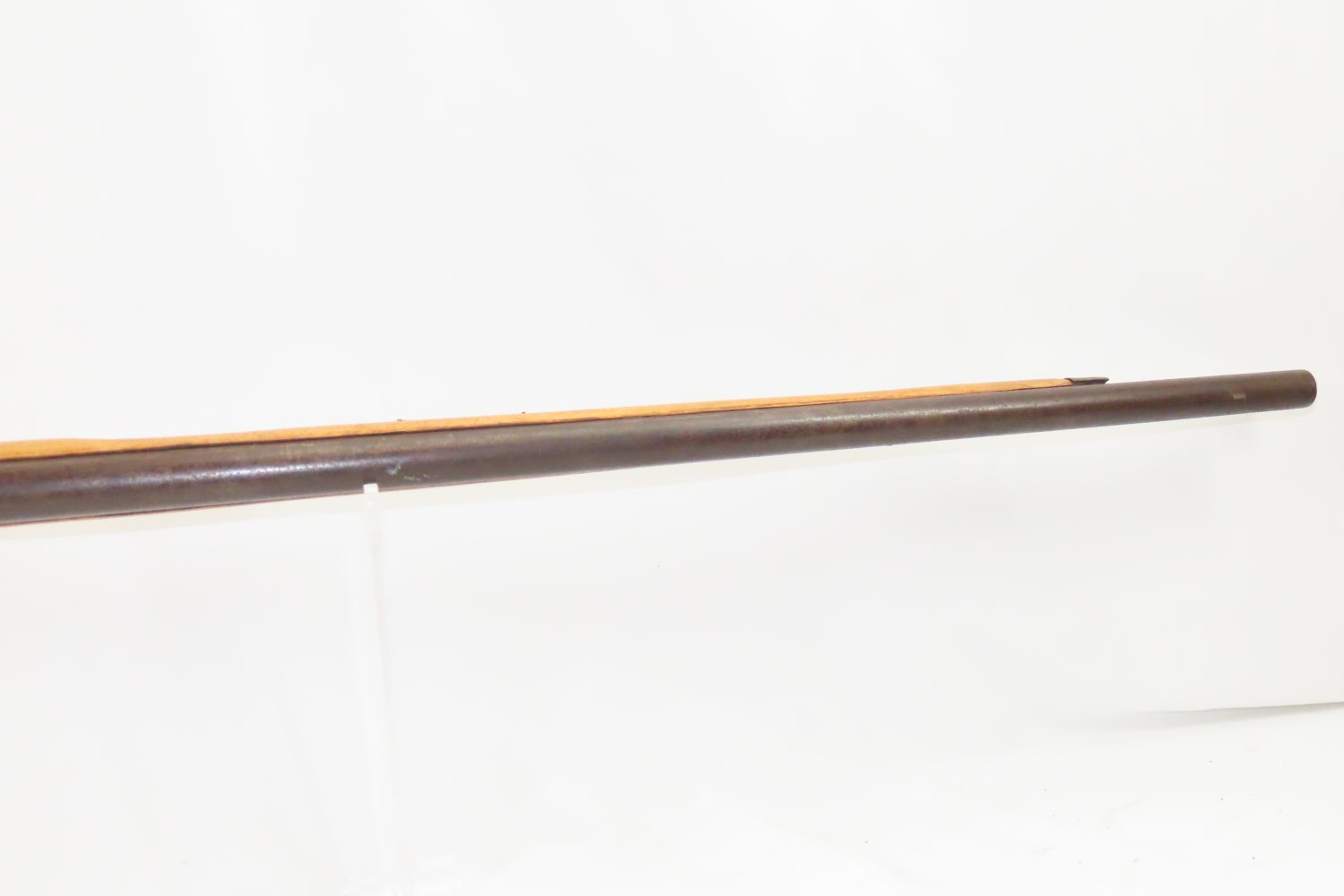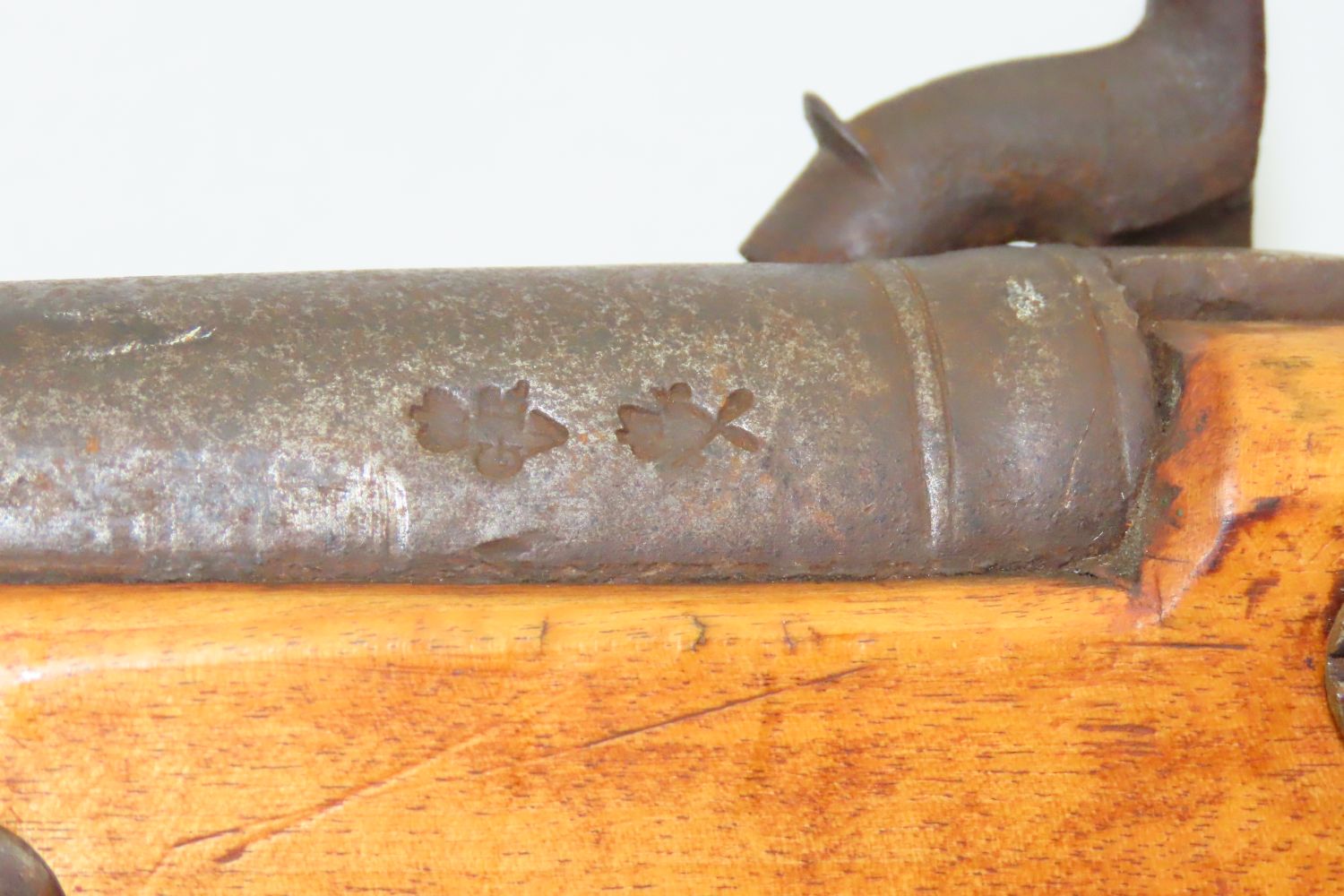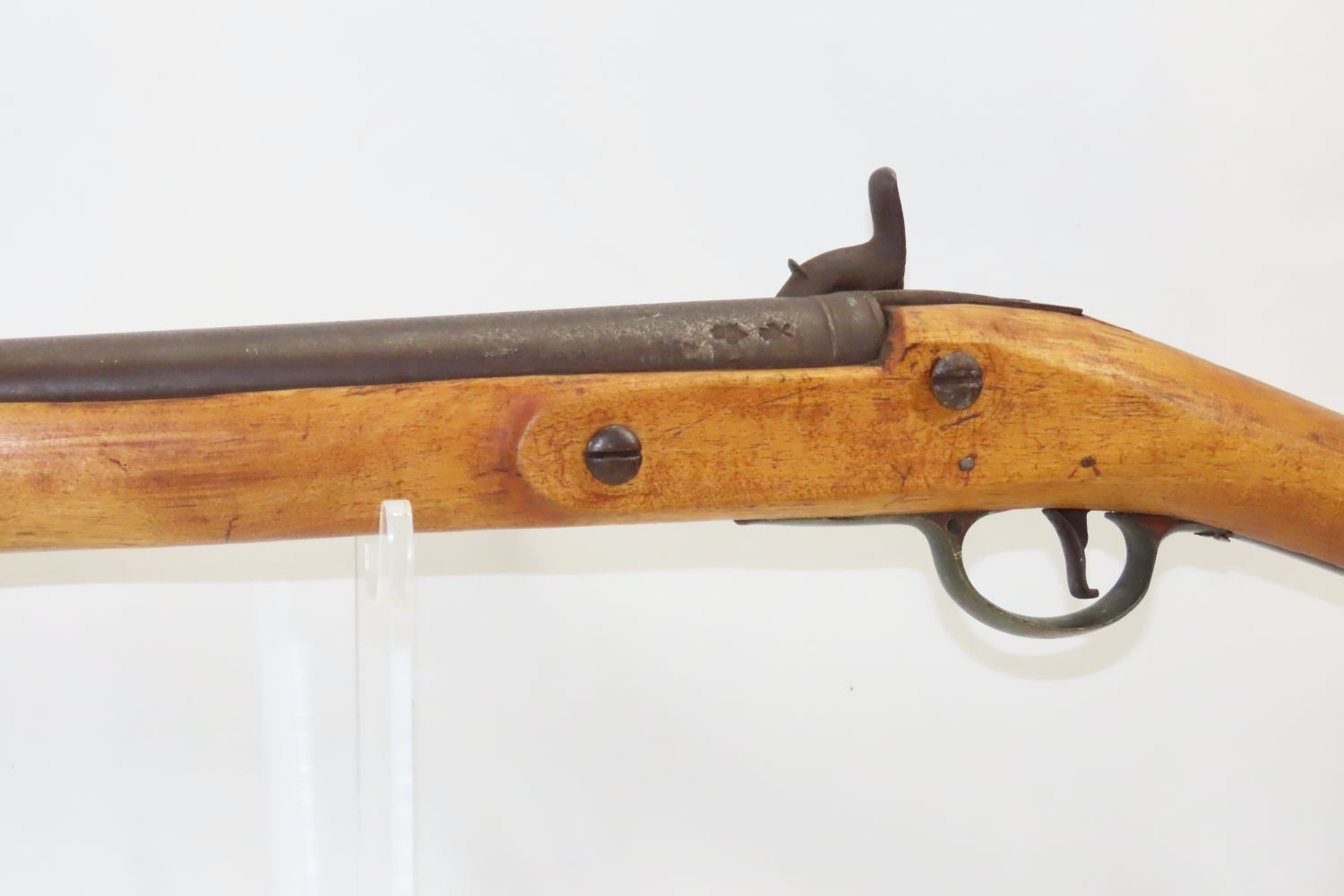- No products in the cart.
7th ROYAL FUSILIERS British Antique BROWN BESS .75 Musket Napoleonic Wars Revolutionary War, Napoleonic Wars, War of 1812
Free shipping. We are allowed to ship direct to door for any deliverable address worldwide.
Product Description
7th ROYAL FUSILIERS British Antique BROWN BESS .75 Musket Napoleonic Wars
Revolutionary War, Napoleonic Wars, War of 1812
Here we present an antique Brown Bess Musket Marked for the 7th Royal Fusiliers, made in England circa the late 1700s-early 1800s. This iconic British Military Longarm would have started out life as a flintlock and converted to percussion as the more reliable firing system was introduced. This pattern of Brown Bess is the same that fought Napoleon Bonaparte in numerous iconic battles, as well as the United States and their American Indian Allies during the War of 1812. This pattern may also correctly be called the “India Pattern” since the Honorable East India Company was the entity responsible for this update to the gun that had been around since 1722. When war with France loomed on the horizon, the British Board of Ordnance diverted these muskets from the EIC contract to supply the war effort.
“F/73” and “7•RL•FS” are stamped atop the butt plate tang. This is for the 7th Royal Fusiliers (Regiment of Foot), Company F, 73rd Musket. A brief history of the Royal Fusiliers: they were raised circa 1685 from the Tower of London Guard for the task of being an elite unit to escort artillery. They were armed with the latest technology—the flintlock fusil—while the vast majority of infantry were still issued matchlocks—hence the name. This was due to the greater risk of igniting powder kegs while having a constantly burning match rather than the relatively contained flintlock firing system. The Royal Fusiliers is a storied unit that was active for a total of 283 years. It saw service in the Nine Years War (1688-97) and saw action in Spain in 1702 during the War of Spanish Succession where it captured the towns of Rota, Port St. Mary’s and Fort St. Catherine.
In 1773, they were sent to Canada where there were rising tensions in Britain’s colonies there. They and the 26th Regiment were the only British regulars in Lower Canada at the time, divided between garrisons, and were defeated by the American rebels at Ticonderoga, Crown-Point, St. John’s, Fort Chambly. However, a remnant of the 7th made up part of the defense at Quebec and they withstood the American siege of 1775-1776 and successfully drove the rebels from Canada in May. Later in 1776, many of the prisoners were exchanged and they reorganized in New York. They successfully defended an attack at Staten Island in August 1777, then in September launched a successful diversionary attack into New Jersey. In October, they joined in the attacks on American forts up the Hudson where they took Fort Montgomery, Fort Clinton, and Fort Constitution, then razed Continental Village. 1778 found them in Philadelphia, 1779 in New York and Connecticut. In January 1781 the 7th, having moved to South Carolina, they successfully pursued General Morgan to the Cow-Pens, however, they suffered great casualties when Morgan’s troops turned and stood their ground. The 7th remained in South Carolina until 1882, evacuated to New York until 1883, before being shipped home to England at the conclusion of the hostilities.
In 1807, the 7th, 1st Battalion sailed to Denmark to lay siege to Copenhagen, preempting Napoleon utilizing the Danish Navy against England. In January of 1809 they attacked the French stationed at the Island of Martinique in the West Indies and captured the island. The 2nd Battalion of the 7th was sent to Portugal in late 1809 where it fought at Talavera in July, Bussaco in September of 1810, Albeuera (now both battalions) in May 1811, then laid siege to Ciudad Rodrigo in January 1812 and Badajoz. Battle of Salamanca July 1812, Battle of Vittoria June 1813, Battle of the Pyrenees July 1813, Battle of Orthez February 1814, Toulouse April 1814. 1st Batt transferred to North America during the War of 1812 (an extension of the Napoleonic Wars) February 1815 where they fought at New Orleans, attacked Mobile and captured Fort Bowyer. A treaty was signed and the Fusiliers were put on a boat to Flanders, where they landed the same day that Napoleon was defeated at Waterloo. (Historical Record of the 7th Foot, or the Royal Fusiliers Containing an Account of the Formation of the Regiment in 1685, and of its subsequent services to 1846 by Richard Cannon Esq.)
This piece would have been in use for the Napoleonic Wars conflicts. It was eventually converted to the percussion firing system circa 1840 to keep it current and useful. It would also have been more reliable.
This example has weathered the storm of time. The action is strong. Dark smooth bore. Solid stock throughout that has been sanded. “TOWER” marked lock. This is a neat musket that belonged to a well-regarded, very experienced regiment with a long history: the Nine Years War, War of Spanish Succession, the Revolutionary War, the Napoleonic Wars, and beyond!
Own the original! This is a legitimate antique and not a reproduction.
Barrel is 39-1/4 inches.
Caliber: .75 Percussion
Overall condition as seen in photos.
Very Fast. Very Safe. FREE SHIPPING WORLDWIDE. Delivered directly to your door by express mail!
Guaranteed AUTHENTIC & Includes CERTIFICATE OF AUTHENTICITY.
www.ancestryguns.com
$6145
#210624
Ancestry Guns considers all of our antique firearms as non-firing, inoperable and/or inert. Title 18, U.S. Code, Section 921(a)(16) defines antique firearms as all guns made prior to 1899. This law exempts antique firearms from any form of gun control or special engineering because they are not legally considered firearms. No FFL, C&R, or any license is required to possess, transport, sell or trade antique guns. All firearms sold by Ancestry Guns that were manufactured prior to 1899 are considered Antiques by the US BATF (United States Bureau of Alcohol, Tobacco & Firearms). Therefore, all of Ancestry Guns' antique guns may be shipped to all US States and most nations around the world.
These antique guns are not sold in “live” condition. They are sold as collector’s items for historical display. Any attempt at restoring an antique gun to be operational is strongly discouraged and is done so at the risk of the customer. By purchasing an antique gun from Ancestry Guns you thereby release Ancestry Guns and its employees from any and all liability associated with use of our antique firearms.
Free shipping. We are allowed to ship direct to door for any deliverable address worldwide.
























